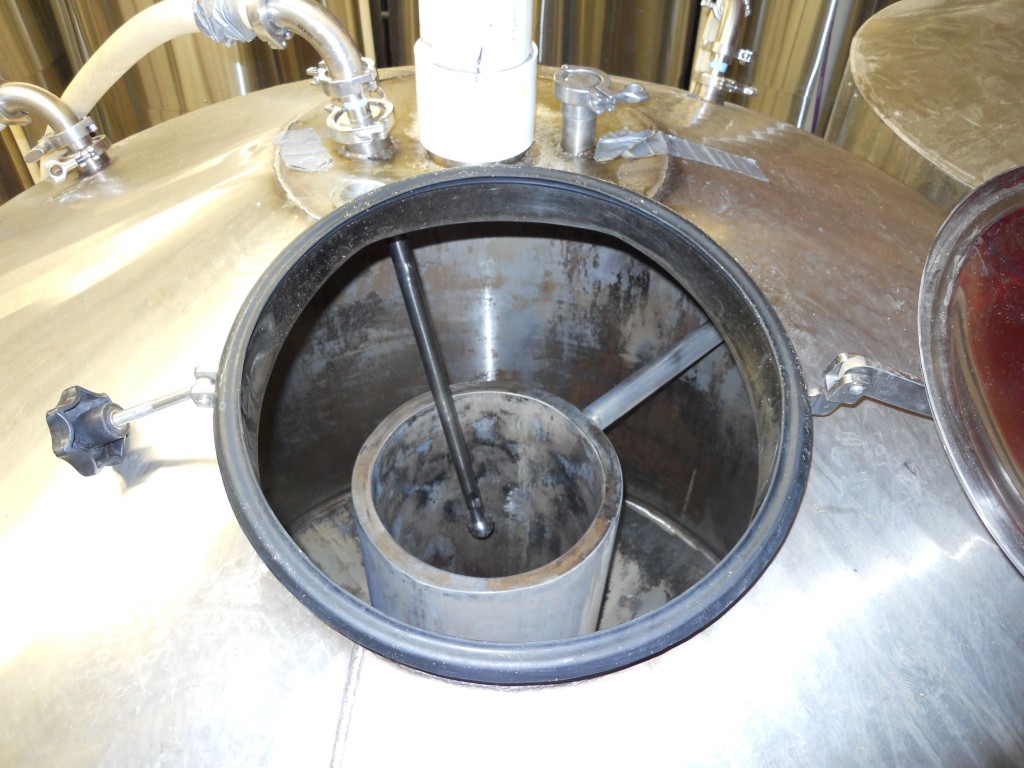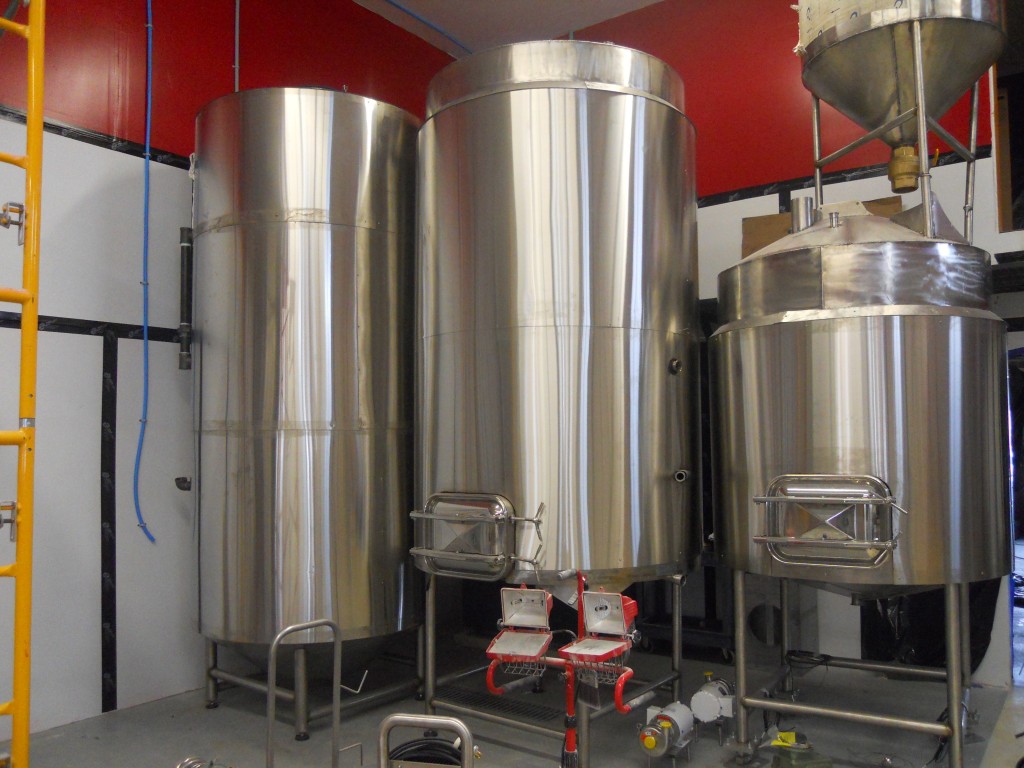After discussing replacing a fire escape that didn’t meet code the customer, whom I did not recognize, asked “Can you make a cylinder?” “Sure,” I replied. “Out of stainless steel?” he questioned.
After a bit more discussion I showed him a stainless pot we had made that had never been claimed by the person who ordered it, hoping I might finally be able to gain some income from the work we had long ago completed.
“No, bigger,” he explained.
And that’s how Ken Hebb and I started the discussion about fabricating the equipment for the brewery he was planning in the summer of 2012. The cylinders were actually 11 tanks, 10 to 15 feet tall, capable of holding about 1000 gallons of beer in various stages of production. And most of them had a heating or cooling jacket and insulation to regulate the temperature of its contents.
We worked from some partially dimensioned drawings of tanks that were comercially available, but we changed most of those dimensions anyway! We made the tanks taller and narrower than they typically would be so they would take up less floor space and utilize the 18 foot ceiling height in the building that would be home to the brewery.
St. Lawrence Brewing Company is now producing beer in Canton, NY. You can look at pictures on this page or better yet stop in and check it out for yourself. Tours are currently Friday, Saturday and Sunday nights.
“could you add an internal calandria?” “Probably, what is it?”

We added an internal calandria to the brew kettle to increase heat transfer and improve circulation during brewing.
As we were in the process of building the brew kettle Ken asked me, “could you add an internal calandria?” “Probably, what is it?” I answered. He explained that an additional cylinder for steam to pass through in the center of brew kettle should make it work better. The challenges were that at this point in construction the calandria needed to be inserted through the hatch and I needed to fit in there with it to make the connections. Fortunately I fit in there with more room than expected to spare. I used that as evidence to my wife that I am eating plenty of salad already.
I knew very little about brewing beer when I started this project. I believe the Bible teaches to avoid drunkeness. I never found an alcoholic drink near as good as sweat tea so thats been easy for me, but none the less, starting a large project on something you are unfamiliar with is a bit intimidating. And this was by far the largest job we had ever done. I learned quite a bit along the way. The tank on the left is called a hot liquor tank and is basically a steam heated hot water tank. The hot water mixes with the barley in the mash tun on the right where it is agitated by a mixing paddle. After that the liquid passes through a fine grate removable bottom panel in the mash tun leaving the grain behind. The liquid, called wort, is then boiled in the top portion of the center tank which is the brew kettle. After brewing the liquid transfers to the bottom of the center tank which is the whirlpool. Here it is cooled and spins which helps remove an remaining solids. At St. Lawrence Brewing a heat exchanger is employed to simultaneously cool the wort while preheating the water which is refilling the hot liquor tank, an energy saving measure. After chilling the product is pumped into a fermenting tank to stay for its alotted time, depending on variety.







